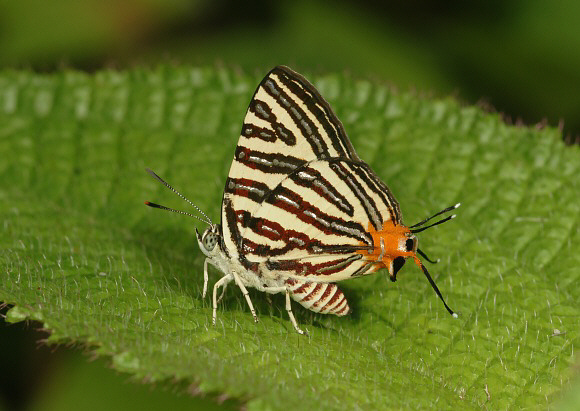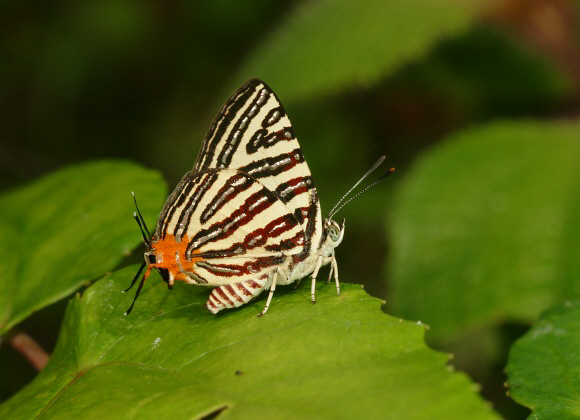
Introduction
The genus Spindasis is regarded by some authors as a subgenus of Cigaritis. Thus defined there are over 70 known species, found variously across Africa, the Middle East, and the Oriental region. The ‘true’ Spindasis species, i.e. those occurring in the Oriental region, amount to 28 species. There are 5 species in peninsular Malaysia – syama, lohita, seliga, kutu, and vixinga. All of these except kutu also occur on Borneo.
The genus is instantly recognizable from the distinctive pattern of red-bordered silvery stripes on the underside. The pattern functions to divert the eyes of predators away from the butterfly’s head, and towards the tornus. The bright orange tornal spot, and the white-tipped ‘false antennae’ tails, which are wiggled while the butterfly rests, add further to the back-to-front illusion. A bird or reptile intending to attack a butterfly will always try to anticipate the direction in which it will try to escape. Accordingly, they aim their attack just ahead of what they believe to be the head of the insect, but the back-to-front illusion fools them into aiming at the tail, and the butterfly is able to make its escape in the opposite direction.
Habitats
Spindasis seliga is a forest insect, usually seen in light gaps or along wide trails.
Lifecycle
The caterpillar is dark green, mottled with paler markings. It feeds on the foliage of the shrubs Dioscorea, Xylia, and Psidium and is attended by ants, which ‘milk’ it to obtain sugary secretions. It lives, and eventually pupates, within a shelter constructed from fragments of bark or stem.

Adult behaviour
Both sexes are usually encountered singly or occasionally in two’s and three’s, and are typically seen when resting on the foliage of trees or shrubs at a height of about 2-3m above the ground. They have a rapid fluttery flight which is difficult to follow with the eye.
Males sometimes visit sandbanks, where they perch on rocks or stones. Upon landing they wiggle the ‘false antennae’ tails for a moment, but once they have assessed that they are in no immediate danger from predators, they stop this activity and remain perfectly still.
